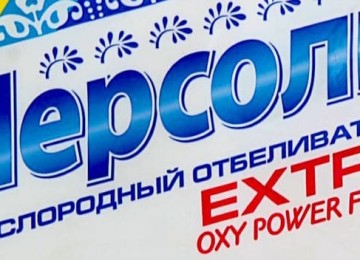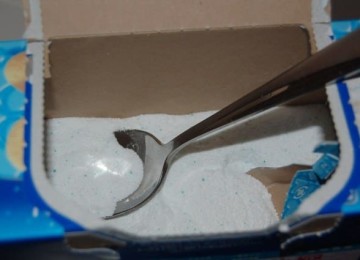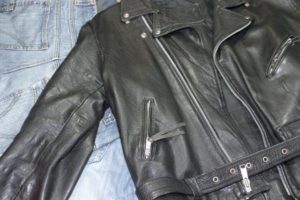 A leather jacket is one of the most popular items in a mid-season wardrobe. The material made from genuine leather, although durable, is quite capricious and therefore requires careful care. From this article you will learn whether it is permissible to wash a leather jacket in a washing machine, and which one should be used. select modeso that the item does not lose its attractiveness and lasts for many more years.
A leather jacket is one of the most popular items in a mid-season wardrobe. The material made from genuine leather, although durable, is quite capricious and therefore requires careful care. From this article you will learn whether it is permissible to wash a leather jacket in a washing machine, and which one should be used. select modeso that the item does not lose its attractiveness and lasts for many more years.
Is it possible to wash a leather jacket in a machine?
Before washing your jacket, pay attention to the label sewn on the inside. It contains all the information about caring for the product: possible cleaning methods, washing mode, if allowed, and what cleaning products are best to use.
The most humane way to remove dirt and dust from any items of clothing made of genuine leather is dry cleaning. But since such a procedure is very expensive and takes time, some owners of leather jackets still decide wash them at home. If it is heavily soiled and it is impossible to dry-clean your jacket in the near future, you can risk washing it in a machine. But even if the precautions described below are observed, the material may become so deformed that you will have to part with the item.
Local pollution
If a small area is dirty, you can try to do without completely immersing the jacket in water.
- Liquid or glycerin soap can be used as a laundry detergent to remove street dirt stains. Dilute a minimum amount of the selected soap base in warm water, moisten the sponge and gently wipe the stains. Then wash off traces of the solution by blotting the treated area several times with a damp cloth and wipe dry with a microfiber cloth.
- Dishwashing gel or liquid laundry detergent without dyes is best for greasy stains. After applying to the stain, leave the solution until the fat is completely broken down. Then blot the foam with a damp microfiber cloth.
- Ammonia will help get rid of old stains. To do this, you will need to add 5 drops of alcohol to 500 ml of soap solution.
- Another way to remove grease stains is hot. It is only suitable if the stain is fresh: iron the stain several times with a low-heat iron through a paper towel. Repeat until the napkin has absorbed all the fat.
- If there is a paint stain on the jacket, you can again use the dry method. To remove it, you will need cotton wool and white alcohol (or a similar liquid). Soak a cotton ball or pad in the solvent and gently wipe the stain. To remove the pungent odor, sprinkle the treated area with lemon or orange juice.
- Vinegar diluted in water in a 1:1 ratio can help remove ink stains. The same solution effectively removes traces of raindrops from the skin.
- Mold. When stored in conditions of high humidity, mold forms on leather products. You can get rid of it by wiping the jacket in the affected areas with a cotton pad soaked in gasoline.
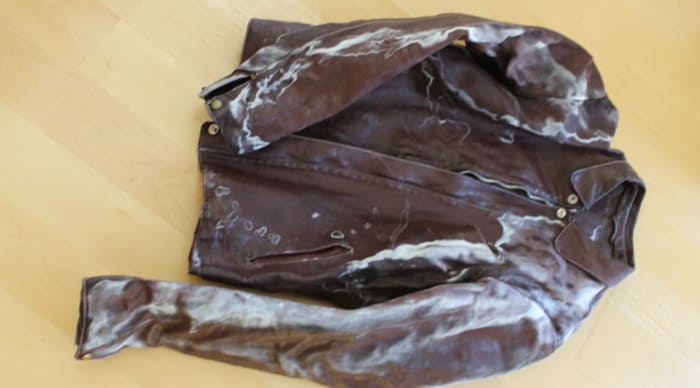
Handwash
If there are too many stains on the jacket, after removing them, streaks may remain on the jacket. To avoid this, the item will have to be cleaned entirely.
First, you should try to wash the item by hand. Before starting the procedure, you should check how resistant the leather of the jacket is to moisture. This can be done by sprinkling water on a small area on the inside of the product. If drops of water are immediately absorbed into the material, such clothing cannot be washed under any circumstances. If the drops remain on the surface, and the jacket is old and in case of failure you don’t mind throwing it away, you can start washing. As detergents It is best to purchase professional ones suitable for natural leather. They are safer than washing powders and will cause less harm to the product if forced into contact with water.
- Having prepared a weakly concentrated soap solution, add two tablespoons of three percent vinegar to it and soak the jacket. The water temperature should be room temperature or slightly cooler, otherwise the skin may crack after drying.
- You cannot leave your jacket in water.After soaking, immediately treat it with a sponge, paying special attention to heavily soiled areas. Then rinse the jacket several times in clean water.
- Without pre-spinning, hang the jacket on a hanger. Then, when most of the water has drained, wrap it in a towel to completely absorb the remaining moisture.
- Shake the dried jacket and hang it indoors away from heat sources and direct sunlight. After complete drying, treat the entire surface of the product with a cotton swab soaked in glycerin, transparent shoe polish or castor oil.
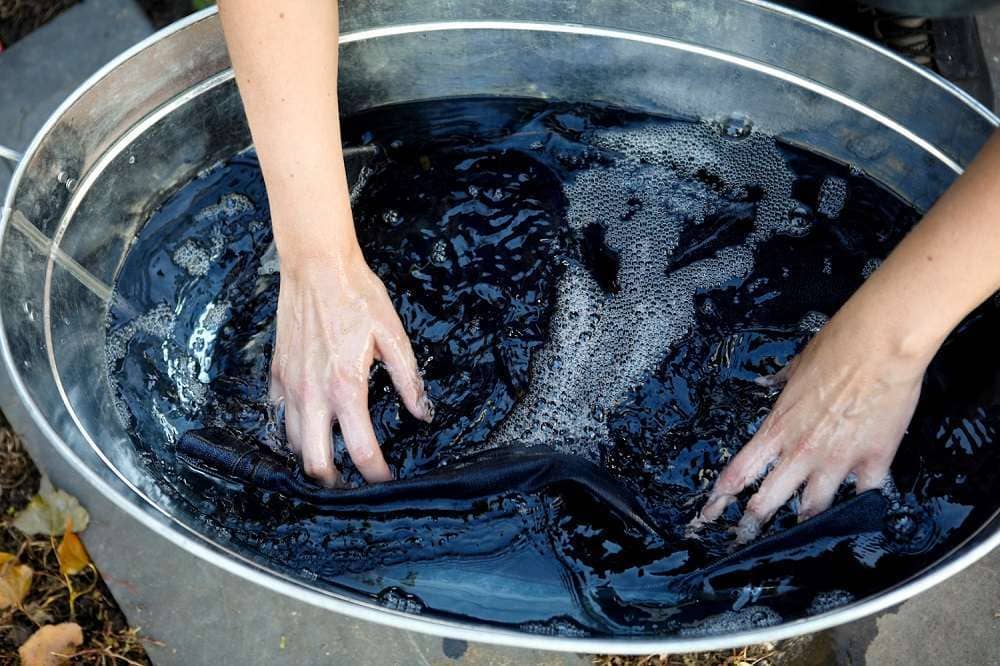
Automatic washing
Those who have decided on radical measures and are ready to wash the jacket in the washing machine must follow several rules:
- Before washing, be sure to place the leather jacket in a protective bag.
- Set a delicate washing mode without spinning. The water temperature should not exceed 30 degrees.
- Add liquid detergent for washing woolen items to the powder compartment.
- Immediately after washing, take out the jacket, hang it on a hanger and let the water drain. Then shake it out and hang it until it dries completely. Treat the material in the same way as after hand washing.
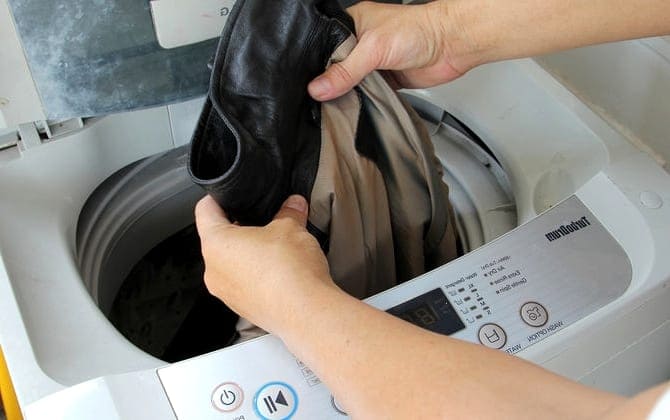
Washing the lining
Since leather clothes are durable, there is a need to wash the inside more than once during the entire period of wear. It is advisable to do this in such a way as to prevent the outside from coming into contact with water.
- One of the ways to clean the inside is painstaking and time-consuming.First you will have to rip off the lining, wash it separately, then sew it in place.
- Second option: hang the jacket on hangers, inside out, and treat it with a soapy solution using a sponge. Then wipe the lining with a cloth dampened in clean water until the foam completely disappears.
- Blot traces of sweat with ammonia or a weak solution of table vinegar.
- After removing dirt, carefully blot the lining with a dry towel, hang the jacket on hangers and let it dry on its own.
Drying rules
Any leather products can only be dried at room temperature in a well-ventilated area:
- After washing, the leather jacket must be laid out on a horizontal rack to drain the water.
- Wrap the item in a towel and lightly blot to remove any remaining moisture.
- Hang on appropriately sized hangers to prevent the leather from stretching and losing its shape.
- Leave to dry at room temperature.
- After drying, treat with a care product.
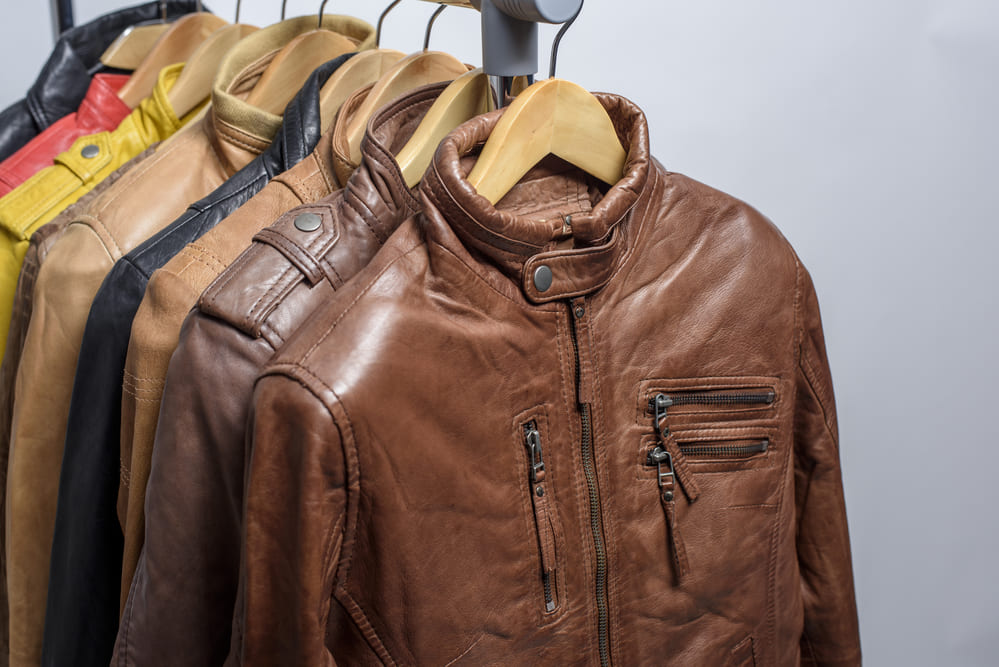
Useful care tips
To keep a genuine leather jacket looking like new, you need to regularly care for it and store it properly. A few rules and tricks that will help preserve the original appearance of things for a long time:
- The cuffs and collar of the jacket, where abrasions most often form, should be wiped from time to time with a cotton pad soaked in glycerin.
- To restore lost shine, you can moisten the surface of the skin with juice from lemon or orange zest.
- After any caring procedures, leather products should be treated with a protective water-repellent composition - this will extend their service life.
- Natural leather should not be ironed. If there is such a need, this can only be done with an iron in the “wool” mode, always through the fabric and from the wrong side.
- Leather items should be stored in cases made of natural fabrics - cotton or linen. To prevent clothes from losing their shape, it is important that the size of the hanger matches the size of the product.
- To prevent colored leather from changing its color and structure, it must be protected from prolonged exposure to sunlight.
- Before treating the product with any care product, you must test its effect on an inconspicuous area.
- Any dirt must be removed immediately, as stubborn stains are much more difficult to remove.
- Avoid any contact with water, as even light rain can damage the material. If the jacket does get wet, wipe it with a dry cloth and immediately treat it with glycerin or a special product for natural leather.
- Under no circumstances should a jacket made of natural suede or fur trim be exposed to moisture.
If the jacket is new, do not skimp on dry cleaning. The high cost of professional services is fully compensated by the long service life of the leather product.








